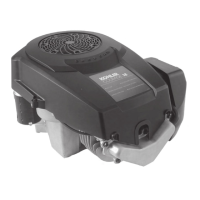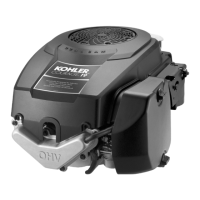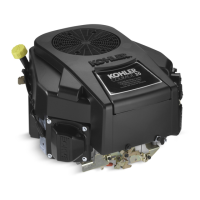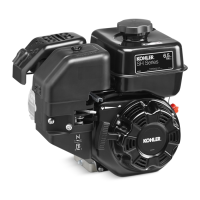7.16
Section 7
Electrical System and Components
Electric Starters
These engines use inertia drive starting motors.
Operation
When power is applied to the starter, the armature
rotates. As the armature rotates, the drive pinion
moves out on the splined drive sha and into mesh
with the flywheel ring gear. When the pinion reaches
the end of the drive sha, it rotates the flywheel and
cranks the engine.
When the engine starts, the flywheel rotates faster
than the starter armature and drive pinion. This
moves the drive pinion out of mesh with the ring
gear and into the retracted position. When power is
removed from the starter, the armature stops rotating
and the drive pinion is held in the retracted position
by the anti-dri spring.
Starting Motor Precautions
NOTE: Do not crank the engine continuously for
more than 10 seconds at a time. If the engine
does not start, allow a 60-second cool-down
period between starting aempts. Failure
to follow these guidelines can burn out the
starter motor.
NOTE: If the engine develops sufficient speed to
disengage the inertia drive starter but does
not keep running (a false start), the engine
rotation must be allowed to come to a
complete stop before aempting to restart
the engine. If the starter is engaged while the
flywheel is rotating, the starter pinion and
flywheel ring gear may clash, resulting in
damage to the starter.
NOTE: If the starter does not crank the engine, shut
off the starter immediately. Do not make
further aempts to start the engine until the
condition is corrected.
NOTE: Do not drop the starter or strike the starter
frame or end cap. Doing so can damage the
starter.
Problem
Starter
Does Not
Energize
Starter
Energizes
But Turns
Slowly
Troubleshooting Guide - Starting Difficulties
1. Check the specific gravity of baery. If low, recharge or replace
baery as necessary.
Possible Fault Correction
Battery
Wiring
Starter Switch
or Solenoid
Battery
Brushes
Transmission
or
Engine
1. Clean corroded connections and tighten loose connections.
2. Replace wires in poor condition.
1. Bypass the switch or solenoid with a jumper wire. If starter cranks
normally, replace the faulty components.
1. Check the specific gravity of baery. If low, recharge or replace
baery as necessary.
2. Baery too small, must be at least 250 cold-cranking amps.
1. Check for excessively dirty or worn brushes and commutator.
Clean commutator using a coarse cloth (not emery cloth).
2. Replace brushes if excessively or unevenly worn.
1. Make sure the clutch or transmission is disengaged or placed in
neutral. This is especially important on equipment with
hydrostatic drive. The transmission must be exactly in neutral to
prevent resistance which could keep the engine from starting.
2. Check for seized engine components such as the bearings,
connecting rod, and piston.
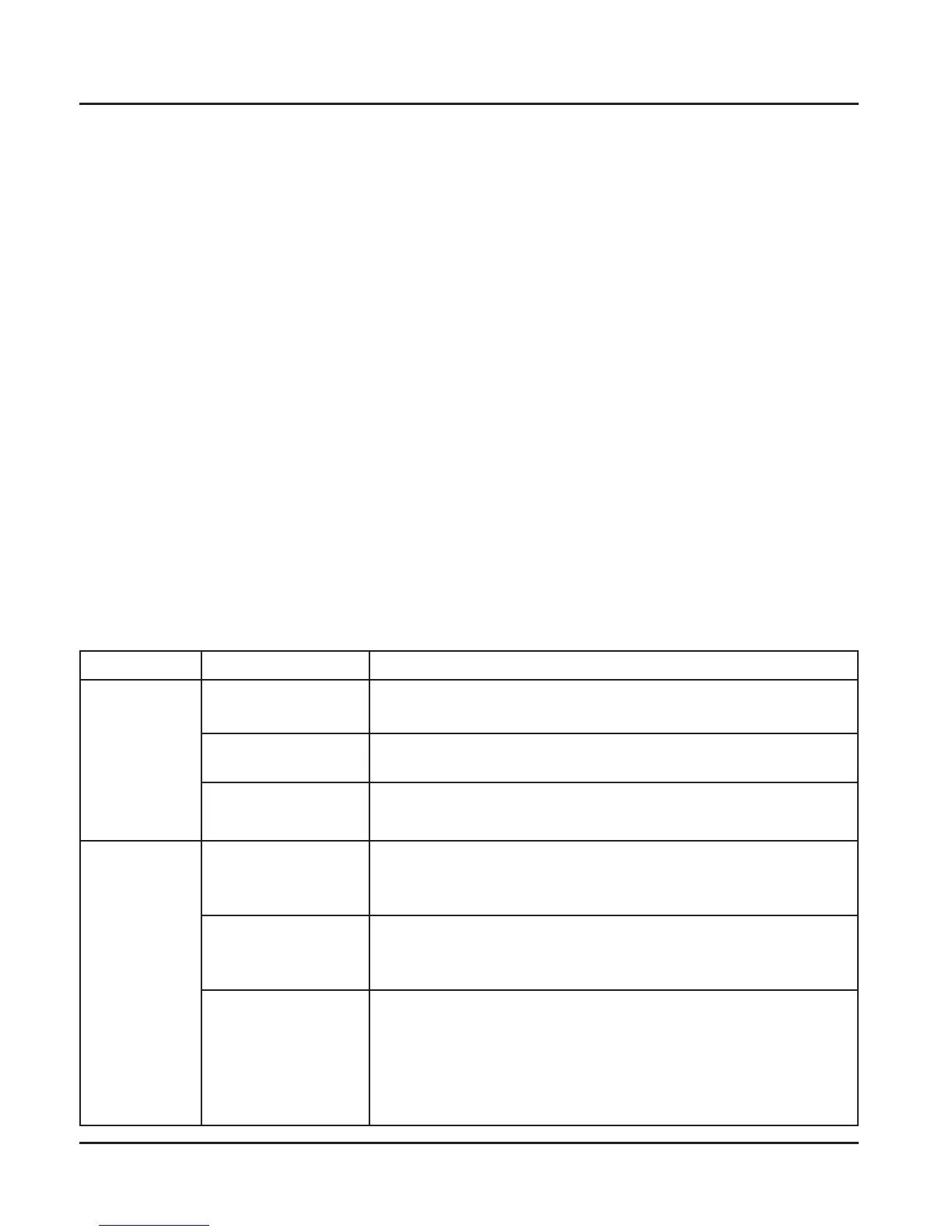